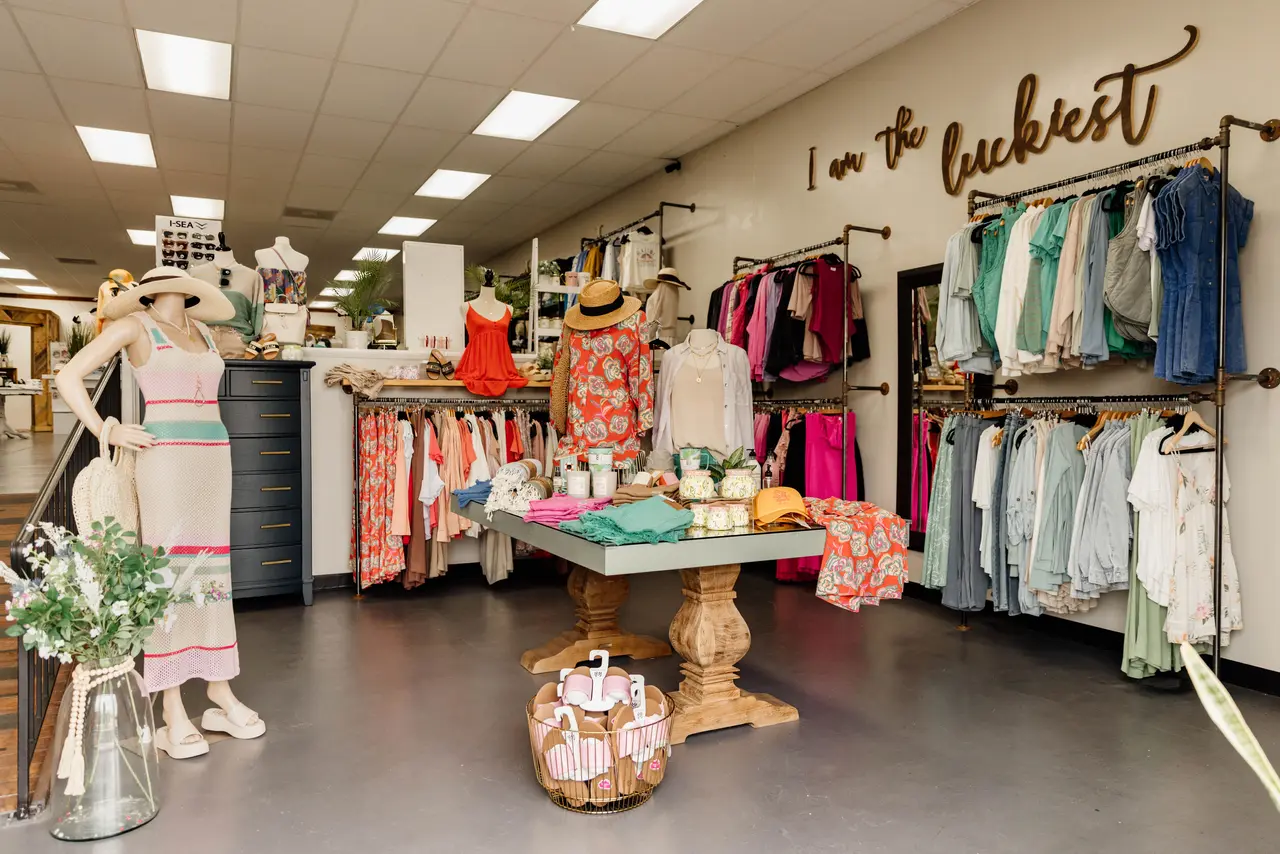The Reason Why Boutique Fashion is the Ultimate Option for Special Design
The Reason Why Boutique Fashion is the Ultimate Option for Special Design
Blog Article
Exploring the Evolution and Effect of Apparel on Modern Style Trends
The evolution of apparel has actually dramatically affected modern style patterns, merging historic precedents with advanced innovations. Legendary figures like Coco Chanel and Yves Saint Laurent revolutionized the style market by introducing principles that prioritize convenience and access, which proceed to resonate today.
Historical Style Influencers
In the tapestry of fashion history, particular figures have actually left an indelible mark, shaping the fads and styles that define whole periods. Coco Chanel, a revolutionary developer, redefined ladies's style by presenting comfy, classy clothes that departed from limiting corsets.
Elsa Schiaparelli is one more crucial number, renowned for her progressive layouts that incorporated surrealist art, collaborating with Salvador Dalí to create whimsical pieces that challenged conventional aesthetics. Her innovative use of color and bold patterns reverberates in modern style. Yves Saint Laurent, meanwhile, democratized high fashion with prêt-à-porter collections, bringing path designs to the masses and establishing a criterion for contemporary ready-to-wear lines.
These enthusiasts, to name a few, not only transformed fashion in their times but also established sustaining fads that reverberate in today's fashion business, offering a foundation whereupon modern-day developers remain to construct and introduce. Their traditions underscore the significance of creativity and daring in style's ever-evolving story.
Technical Innovations in vogue
Among the vibrant landscape of the garment industry, technical innovations stand at the center of advancement, reshaping how developers develop and customers involve with fashion. The assimilation of 3D printing has actually reinvented style processes, making it possible for designers to experiment with complex frameworks and sustainable materials that were formerly inconceivable. This technology promotes fast prototyping, decreasing waste and expediting manufacturing times.

Smart textiles, embedding technology right into fabrics, are likewise transforming the market. Technologies like temperature-regulating and self-cleaning materials offer boosted functionality and convenience. Wearable technology, including functions like health and fitness monitoring and communication, includes a new measurement to fashion, merging aesthetic appeals with practicality.
Cultural Shifts and Design
As technical innovations remain to reshape the apparel industry, cultural shifts are just as significant, redefining design and customer choices. In recent times, the rise of social networks systems has actually accelerated the dissemination of international style trends, enabling diverse social impacts to coexist and converge. This digital interconnectivity has assisted in the quick exchange of concepts, causing a more diverse and inclusive analysis of style that mirrors the multifaceted nature of modern-day society.
Social understanding and admiration have actually motivated designers to draw motivation from a wider spectrum of ethnic and historic contexts, integrating conventional themes with contemporary aesthetics. This fusion has actually caused fashion that reverberates with a broader target market, promoting a sense of identity and belonging throughout different demographics. Furthermore, the boosting demand for customization has actually driven brand names to use adjustable options, enabling consumers to share originality while mirroring their social heritage.
Additionally, moving societal worths have impacted style, with inclusivity and diversity coming to be main themes. The market has begun to welcome designs and influencers of various body kinds, ethnic backgrounds, and gender identifications, difficult traditional elegance requirements. This transformation highlights the power of cultural changes in shaping the future of style, as style comes to be an extra genuine expression of individual and collective identity.
Sustainability and Modern Design
While the style market continues to develop, the necessary for sustainability has actually ended up being progressively urgent, influencing modern-day layout methods. The increase of slow fashion, which stresses top quality over amount, motivates consumers to invest in classic items rather than transient trends.
Additionally, modern design is characterized by its development in reducing waste and promoting circularity. Techniques such as zero-waste pattern cutting and 3D knitting are obtaining grip, allowing developers to produce garments with marginal textile wastefulness. In addition, brands are taking on clear supply chains, making sure liability and promoting consumer trust. This method not just minimizes environmental influence yet likewise improves the social obligation of fashion residences.

Future Trends in vogue

Sustainability will proceed to be a driving pressure in shaping future style trends. The industry is progressively embracing environment-friendly materials and ethical manufacturing techniques, responding to an expanding consumer need for accountable practices. Technologies such as bio-fabricated materials and closed-loop recycling systems are established to redefine exactly how clothes is produced and eaten, minimizing environmental impact while keeping style and quality.
Social shifts, including the surge of inclusivity and diversity, will also play a crucial function. As society comes to be much more knowledgeable about social issues, style is expected to end up being a system for expression and modification. Developers will likely focus on developing collections that show a wider range of identifications and experiences, promoting representation and availability.
Conclusion
The development of apparel considerably affects modern-day fashion trends, where historic impacts merge with contemporary designs. Secret numbers like Coco Chanel and Yves Saint Laurent have actually redefined design, while technological advancements such as 3D printing and clever textiles broaden imaginative opportunities. Cultural changes towards inclusivity and sustainability urge brands to welcome and embrace moral techniques variety. This continuous evolution highlights fashion's function as a mirror to social worths and technical advancement, recommending a future abundant with technology and inclusivity.
The development of clothing has dramatically affected contemporary fashion fads, merging historic precedents with advanced technologies.Among the dynamic landscape of the style market, technological improvements stand at the center of advancement, reshaping just how designers develop and consumers involve with fashion.While the style market proceeds to develop, the crucial for sustainability has come to be progressively immediate, influencing modern-day design techniques. As sustainability becomes ingrained in modern style, it official site leads the method for a more accountable and conscious fashion market.
The evolution of garments significantly affects my sources modern-day fashion fads, where historical influences combine with modern designs.
Report this page